Did you know that water covers around 71% of the earth’s surface? The oceans alone hold roughly 96.5% of all the water on earth, with the rest held in lakes, rivers, glaciers, and icecaps. There’s also water in aquifers, in the soil as moisture, and in the air as water vapor. Even you and your pets are made up of around 60% water!
So, it’s not surprising that aquatic communities form the world’s major water habitats. Those habitats are divided into freshwater and marine communities.
Read this guide to learn more about the planet’s aquatic communities and how you can recreate them in your home aquarium.
Aquatic Community Classification

Introduction To Communities
An aquatic community is basically a community that lives in a body of water. Within those communities are organisms that depend on each other and on their surrounding habitat. There are two primary types of aquatic communities:
- Freshwater communities
- Marine communities
Within those ecosystems are various communities. Let’s take streams as an example.
Physical Stream Types
A stream can be defined as a body of running water in a channel. Streams are generally above ground, although streams can also be underground or even under a glacier. Essentially, a river is just a large stream that’s composed of many smaller streams.
Streams have different names according to their size and can be referred to as:
- Branches
- Forks
- Creeks
- Runnels
- Brooks
- Rivulets
- Rills – the smallest kind of stream
Where the stream begins is referred to as the source, whereas the bottom end is called the mouth. The main course of the stream is called the trunk.
Least-Disturbed Streams
Least-disturbed streams are also sometimes called “reference streams.” These bodies of water generally show little disturbance or human influence and exhibit a completely natural ecological function.
Watershed Conservation Priorities
To preserve the aquatic communities that live within the various streams, rivers, and other bodies of water in a state, local conservation priorities generally reflect the local community’s values, but they can also take into account wider regional priorities.
Watershed Restoration Priorities
Similarly, when the watershed has been damaged by human or environmental activity, action can be taken to restore it.
Watershed restoration priorities are usually based on research and studies that have cataloged the various habitats and species that live within the ecosystem of the watershed. A plan is then devised that will help to restore the aquatic environment and repopulate its community accordingly.
Watershed Enhancement Areas
Watershed enhancement is defined as any activity that helps the watershed to function better.
That process starts with the protection and management of existing streams. For example, capturing water to store it for release later in the summer season when water is short. That might entail changes in land management practices, such as agriculture, logging, or road building.
Aquatic Ecosystem
As previously mentioned, there are several different types of aquatic ecosystems.
Freshwater Communities
Freshwater communities consist of fish, invertebrates, plants, crustaceans, and insects that live in freshwater environments such as lakes, streams, ponds, rice paddies, marshes, etc.
Marine Communities
Marine communities exist in the ocean and deep-sea environments. Communities here contain fish, invertebrates, corals, anemones, crustaceans, seaweeds, turtles, mammals such as whales and dolphins, and even snakes in some oceans.
Lentic
A lentic ecosystem refers to an aquatic community that lives within a body of standing water, including:
- Ponds
- Ditches
- Seeps
- Seasonal pools
- Lakes
- Marshes
Some deeper waters, such as lakes, may have multiple layers of ecosystems that are influenced by light. However, ponds and pools are generally able to support a wider range of water plants since they receive more light penetration.
Lotic
Lotic ecosystems can be any form of moving water body, including:
- Stream
- Brook
- Rill
- Spring
- Creek
- River
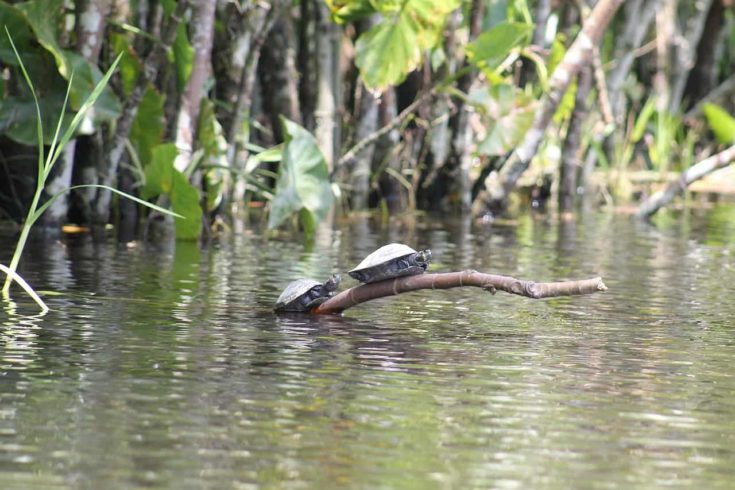
The water in a lotic ecosystem, from its source to its mouth, needs to have turbidity, atmospheric gases, dissolved material, and longitudinal temperature gradation.
Within lotic ecosystems, there are two main zones, pools and rapids. Rapids are parts of the water body where the water current is fast enough to keep the substrate clear of materials, whereas pools are deeper areas where the flow is much slower and silt can accumulate.
Wetlands
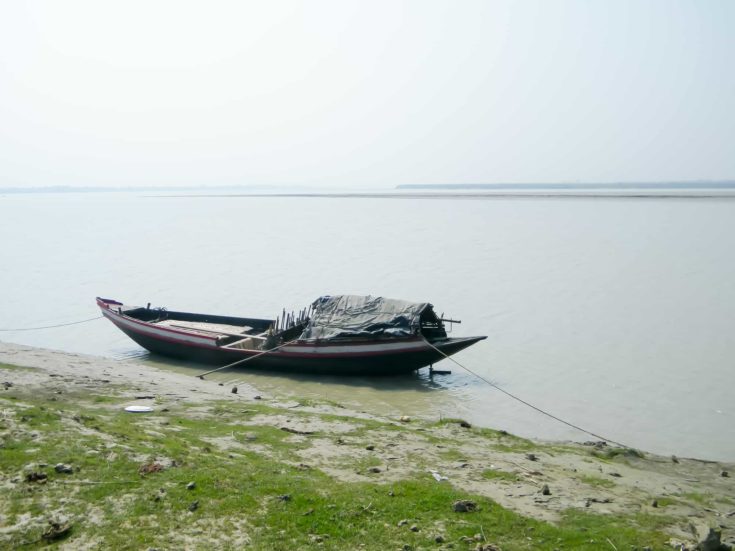
Wetlands are areas where the land is covered by water year-round or for certain periods during the year. The saturation of the land generally determines what species of plants and animals can exist there and at what time of year. Wetland habitats can support both terrestrial and aquatic species.
There are various categories of wetlands:
- Coastal/tidal wetlands
- Inland/non-tidal wetlands
Keeping Tropical Fish
You can create your own aquatic community in your home aquarium, riparium, paludarium, or terrarium by keeping tropical fish.
Your First Aquarium
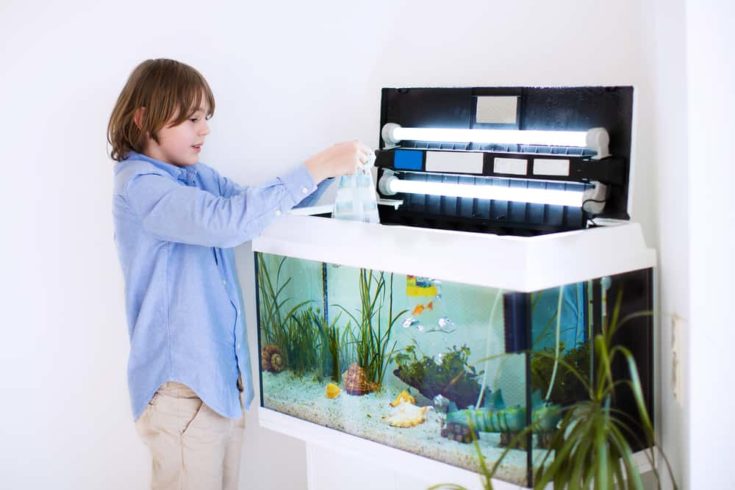
Ideally, your first aquarium should be 20-gallons or larger. It’s actually easier to maintain a larger tank than a small one, so I would always recommend you start with a large aquarium if you have space for one.
Also, larger tanks generally have a more stable environment and can cope with common beginner mistakes such as overfeeding.
Where To Place Your Aquarium
Essentially, you need to keep your tank somewhere that will safely take its weight, ideally on a purpose-built tank stand on a solid floor.
Your fish tank shouldn’t be placed anywhere that direct sunlight will fall on it, as that will encourage algal growth and could cause the water to get too warm for the fish, causing temperature shock. Also, you don’t want the tank in a cold or drafty spot.
For more information, read this detailed guide on where to place your aquarium.
Aquarium Equipment
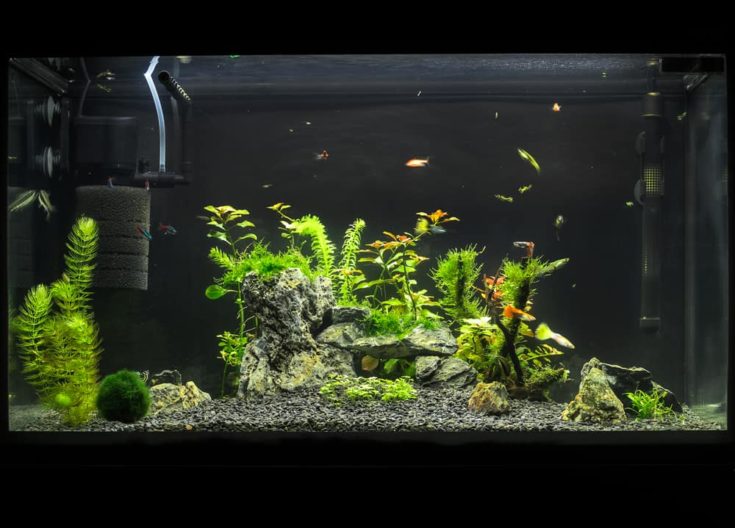
Freshwater aquariums are generally cheaper to set up than marine tanks, as you don’t need as much equipment and what you do need isn’t as costly.
Whatever equipment you decide to buy, I advise you to always get the best quality kit that you can afford. Cheap pumps, filters, etc, are prone to failure, which could be disastrous for your fish.
Aquarium Filter
Whatever size fish tank you choose, an efficient, reliable aquarium filter is essential.
The filter you have must be powerful enough to circulate the water around your tank and through the filter media at least four times every hour. Check the product packaging for the GPH rate. That refers to the Gallons Per Hour rate.
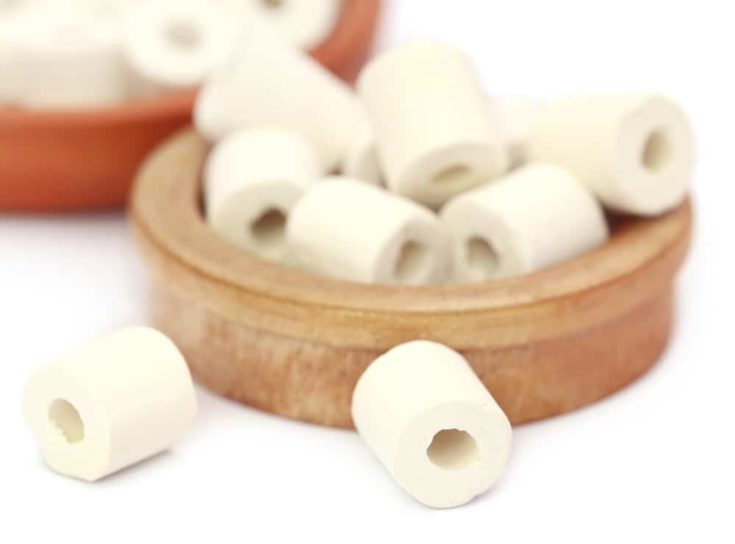
The kind of filter you choose depends on the size of your tank and your personal preference. HOB filters are a good choice because they don’t take up space inside your tank. Sponge filters are excellent for shrimp tanks and for fish such as bettas that don’t appreciate a strong flow. External canister filters are generally the most popular choice for aquarists with a large tank.
Aquarium Heaters
If you want to keep tropical fish, you need a heater for your tank, unless you live in a very warm climate or you keep your home extremely warm, i.e., at an ambient temperature of 74o.
Some filtration systems have integral heaters, although most don’t, so you need to buy a separate heater. You need to choose a heater that’s the right size for your tank. An undersized device will have to work harder to maintain the correct tank temperature and will, therefore, cost you more to run than a larger heater.
Aquarium Lighting
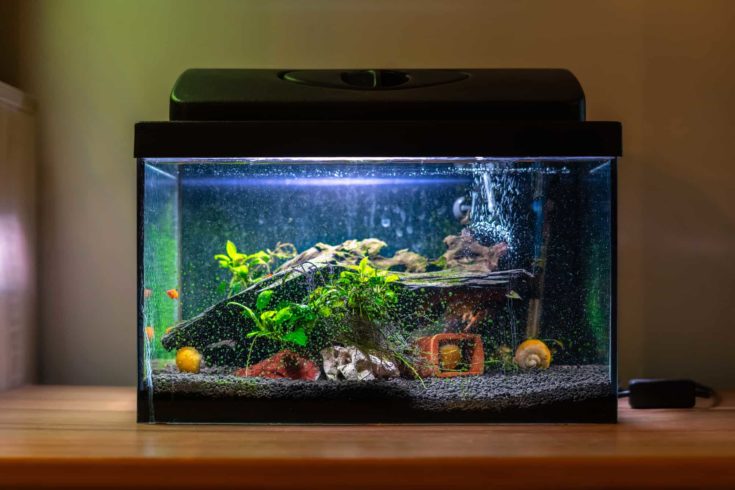
Although your fish don’t need lighting and will do fine with ambient light, live plants need eight to ten hours’ light every day for photosynthesis. Also, you want to see your fish’s bright colors and captivating behavior, and you can’t do that if your aquarium is in perpetual darkness!
Most fish tank hoods have an integrated lighting unit, but you can usually change the bulbs to suit your plants or the effect you want for your aquascape.
Air Pump
You only need an air pump if you want to run an airstone or bubbler, which you’ll need if you keep oxygen-hungry species such as goldfish.
Air pumps are generally inexpensive to buy and simple to install.
Aquarium Plants
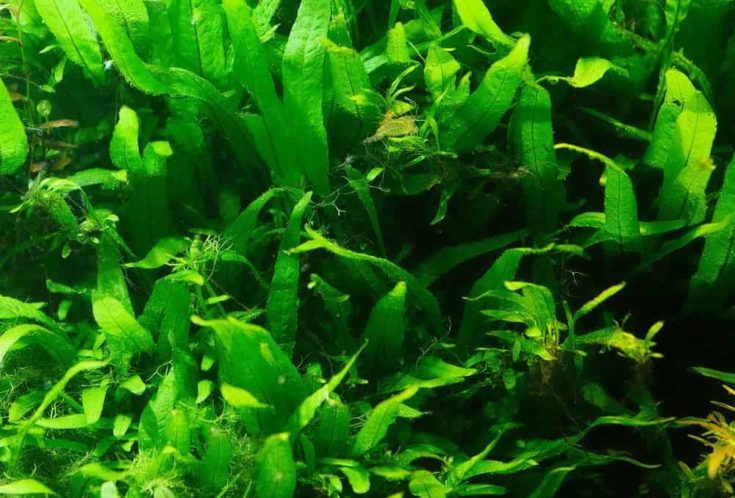
Although you don’t need to keep living aquatic plants in your fish tank, I recommend that you do. Even if you’re a beginner, there are lots of plant species that are easy to keep and require very little maintenance.
What’s so good about living aquatic plants?
Live plants are extremely beneficial for your aquatic community.
- Plants use carbon dioxide and release oxygen into the water as they photosynthesize.
- Plants take up nitrates and phosphorus from the water for use as fertilizer.
- Shy fish and vulnerable fry can use bushy plants for shelter and protection.
- Bettas and some other fish species like to use broadleaf plants as resting places and hammocks.
- Living plants can outcompete algae for nutrients, helping to prevent algal overgrowth.
- Many inverts and some fish use plant debris as a food source.
- Living plants look beautiful!
The main drawback to keeping live plants is that you need to trim them from time to time to prevent overgrowth, and you need to remove dead leaves before they decompose and pollute your water.
Setting Up The Aquarium
Once you’ve assembled everything you need, setting up the aquarium is relatively straightforward.
Read our comprehensive guide on how to set up your fish tank to find out how to do it the right way.
Cycling Your Aquarium
Before you can put fish into your aquarium, it’s essential that the tank is fully cycled.
When fish waste, uneaten fish food, plant debris, and other organic matter begin to decompose, they produce toxic substances, including ammonia, which is highly toxic to your fish.
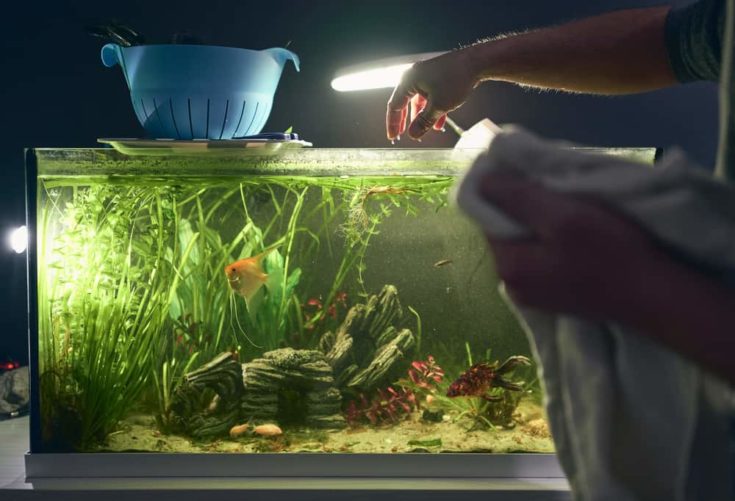
In nature, rainfall and exposure to the air help to disperse toxic chemicals from the water. However, in the closed ecosystem of your fish tank, toxins have nowhere to go, and that’s where your filtration system comes in. Inside the biological filter media (and on the substrate and tank surfaces) colonies of beneficial bacteria form, which process ammonia, first into nitrites, and then into less harmful nitrates.
In a brand-new aquarium, the colonies of bacteria haven’t had a chance to establish themselves. So, if you put fish straight into a pristine setup, any organic waste that’s produced simply decomposes, generating toxins that very quickly poison your fish. That’s why mass fish kills are so common in new beginner tanks.
How Long Does Cycling Take?
Don’t be impatient to put fish in your tank!
Cycling a new aquarium can take anywhere from six weeks to two months. During that time, you need to test the water every day to observe the ammonia and nitrite levels. Once levels of both those substances are at zero, you know that the tank is almost ready to receive its first occupants. Although nitrate is not as harmful, you don’t want more than 20ppm (parts per million) in the water.
Choosing Tropical Fish For Your Aquarium
Once your tank is cycled, you can add your fish.
First of all, just add a few small fish so that you don’t overload the newly established biological filter. Keep testing the water over the next week or two, and add more fish once the levels stabilize again. If you’re adding very small shoaling species, it’s best to add the whole school together.
But with such a dizzying array of fish species to choose from, how on earth do you decide what fish to buy?
You don’t need to keep a community tank. Sometimes, a community of fish can be more challenging to manage than a single-species tank simply because not everyone will get along. However, most newbies to the hobby want to keep a range of different fish in their tank.
Stocking Your Tank
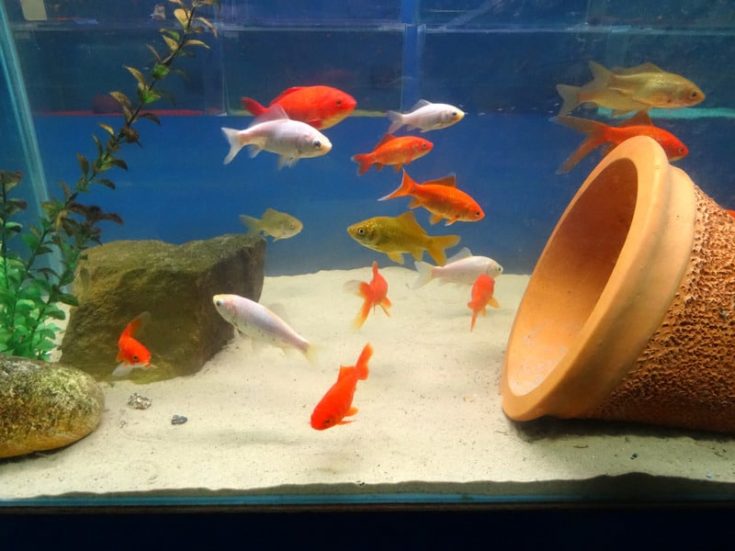
Whatever species you decide to buy, do lots of research first to make sure that all the fish are compatible in terms of temperament, tank size, and water conditions.
If you want to keep a community, it’s advisable to begin with small, peaceful species that aren’t known to be fin nippers. Remember that most of the cute little fish you see for sale in your local pet store are juveniles that might get considerably bigger when fully mature. For example, that tiny fantail goldfish could easily reach 6” or even bigger when he’s a few years old!
Tropical Fish To Avoid
Here are a few common fish species that I would advise you against keeping:
Goldfish
Goldfish are coldwater fish that shouldn’t be kept in a tropical tank, as the water temperature is too warm for them.
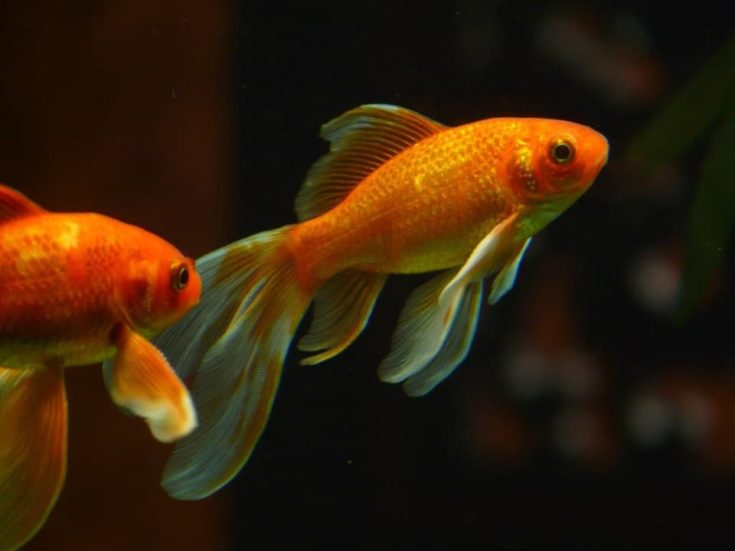
As mentioned above, goldfish can grow very large, especially long-bodied species such as Comets that can reach 12” long when fully grown. These types are best kept in a spacious pond. Although goldfish can live for over 30 years if cared for properly, their lifespan is considerably shorter than that when tank-kept, largely due to issues of overcrowding and poor water quality.
Goldfish are extremely dirty fish that place a big load on your biofilter. They also have a habit of eating or uprooting plants, which is a pain if you create a beautiful living aquascape, only to have it trashed by your fish!
That said, the hardy goldfish can make excellent pets if you have a large aquarium and you don’t mind the extra maintenance work these fish demand.
Plecos
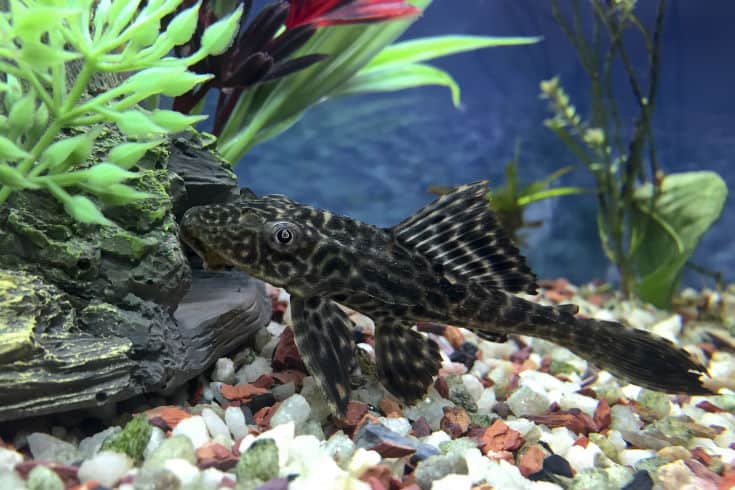
Plecos are also known as sucker-mouth fish, and they’re popular with beginners. Plecos are relatively inexpensive to buy and are readily available.
However, many species of Plecos can grow to be enormous, up to 24” long or even more. Needless to say, that’s far too big for a 20-gallon beginner aquarium! Unfortunately, in some areas of the US, these giant fish have been released into the wild environment once they’ve outgrown their owner’s tank. The fish have caused tremendous damage to the local ecosystem in some areas where they’ve become established.
However, you could buy an Ancistrus instead. These fish look identical to Plecos, but they only grow to a few inches in length.
Pacu
Pacus have become very popular in recent years, largely because they resemble piranhas. However, these little fish grow extremely fast and can reach 24” in length. Consequently, Pacus are not suitable for a home tank because of their size and the amount of waste they produce.
Bala Sharks
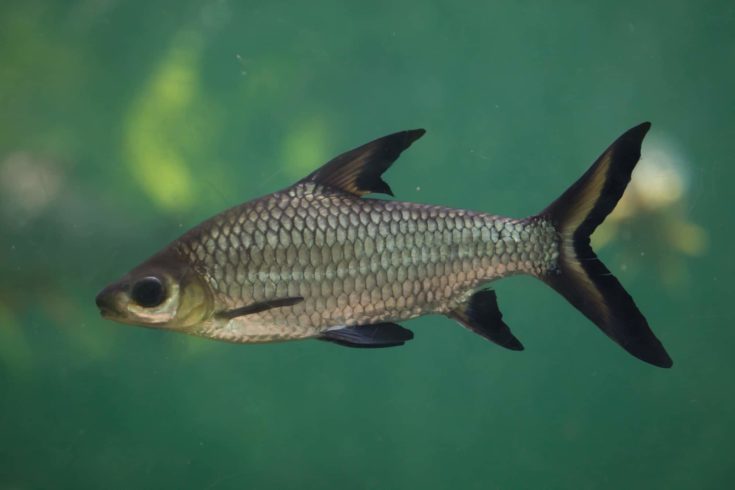
Bala sharks are also extremely popular with beginners. However, these fish also grow very rapidly and can get very large, making them unsuitable for a home tank.
Red-Tailed Catfish
These guys are another species that grows large, typically to over 24” in length. Also, these fish are highly predatory and would quickly make a meal of other fish and inverts in your tank.
Recommended Species
So, now you know what fish species I don’t recommend, let’s take a look over some of the best fish for beginners. This list is by no means exhaustive, as there are plenty of beautiful, easy-to-care-for fish that are ideal for beginner tanks. However, these are a few of my personal favorites.
Livebearers
Any of the species of livebearers make a great addition to a peaceful community tank of small fishes. These fish are easy to look after, most are brightly colored, active, and sociable, and they will most likely produce a lot of fry for you, too.
Examples of popular livebearer species include:
- Guppies
- Mollies
- Platys
- Endler’s livebearers
- Swordtails
Barbs
Barbs appreciate well-oxygenated water and some are known to be semi-aggressive. However, the more peaceable species of barbs include:
- Cherry barbs
- Rosy barbs
- Five-line barbs
Semi-aggressive barbs include Tiger barbs. However, I keep mine in a tank with Neon and Ember tetras and some Corydoras catfish, and everyone gets along fine.
Tetras
There are lots of different species of tetras, many of which are a good choice for a beginner tank. Popular tetra species include:
- Neon tetras
- Cardinal tetras
- Black Skirt tetras
- Rummy Nose Tetras
- Ember tetras
As with all fish, do some research before you buy anything and ask in-store to make sure that the species you’ve chosen will get along.
Gouramis
Gouramis are also known as labyrinth fish. Thanks to the fish’s labyrinth organ, they are able to breathe atmospheric air. In fact, the fish need to do that, as their bodies are unable to draw all the oxygen that the fish need from the water.
There are several species of gouramis that are suitable for beginners, including Dwarf gouramis and Pearl gouramis. However, not all varieties are peaceful, and males can be very territorial, which can wreak havoc in a community tank.
Betta Fish
Betta fish are second in popularity only to goldfish when it comes to choosing pet fish. There are plenty of things about bettas that are very appealing. They are absolutely beautiful fish that come in a huge variety of colors and forms, bettas are easy to care for, and they can live in a small tank. Betta fish have very individual personalities, too, and can recognize and interact with their owners. You can even teach your betta to perform simple tricks!
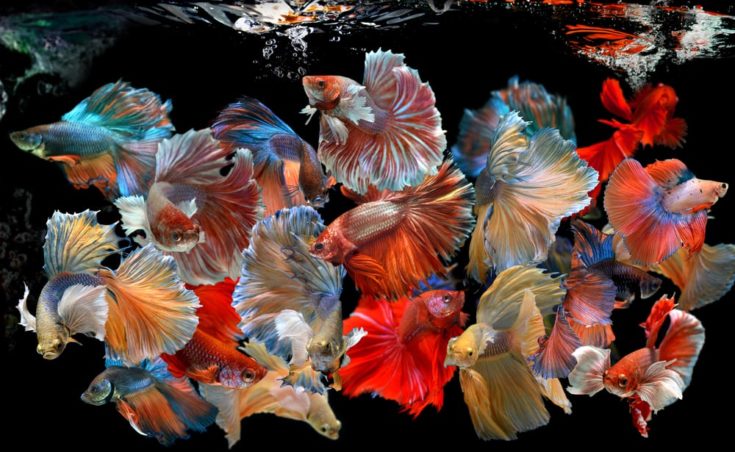
However, male bettas must be kept alone. These fish are highly territorial and very aggressive if another male betta, or a fish that resembles one, enters their patch.
Catfish
Small species of catfish such as Corydoras can make a great addition to a community tank. These busy little creatures are very helpful members of your aquarium cleanup crew, eating any food that falls to the substrate and grazing on algae and plant debris.
When choosing catfish for a community tank, make sure that the species doesn’t grow too large and that they are not nocturnal. You want to see your fish!
Cichlids
Cichlids have a reputation as being difficult to keep and not suitable for beginners. However, that’s not necessarily the case, provided that you choose the right species.
Cichlid species that are suitable for a novice tank include Kribensis and German Blue Rams. Angelfish can also make a nice addition to your tank, although they can be aggressive and are best kept with other semi-aggressive types of a similar size.
Other varieties of cichlids are better left to more experienced hobbyists for several reasons. Some cichlid species can grow pretty large, such as Oscars and many others. Although gorgeous fish, Checkerboard cichlids and Discus can be very sensitive to water parameters and are not as forgiving of rookie errors as other types.
Some cichlids, including Jaguar cichlids, can be highly aggressive, and many others have special requirements, such as most of the African species. These specialists are best kept in a community tank that’s devoted to species of cichlids from one lake.
In Conclusion
I hope you enjoyed our guide to designing an aquatic community and found it helpful. If you did, please remember that sharing is caring, and hit the “share” button!
Keeping tropical fish and designing an aquatic community is an exciting, fascinating hobby that has intrigued people for hundreds of years. Even if you have a modest-sized aquarium and you’re a newbie to the hobby, with a little imagination, you can recreate many aquatic habitats. As you gain more experience, you might want to set up a biotope where you can keep fish that are included on the IUCN Red List of Threatened Species, helping to preserve species whose numbers are declining in nature because of habitat destruction.
What kind of environment did you create for your fish? Tell us in the comments box below.